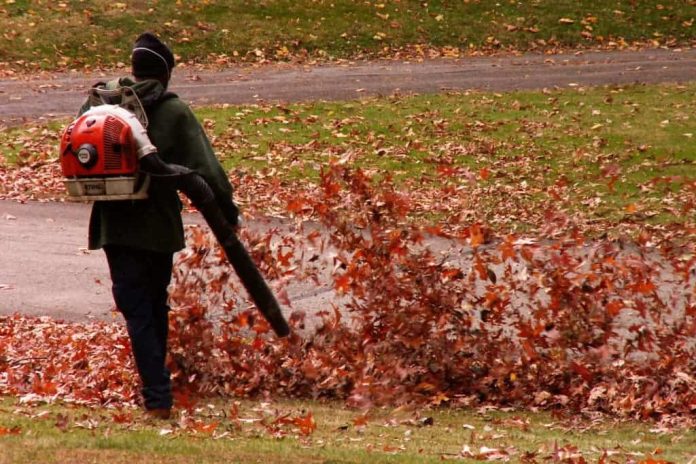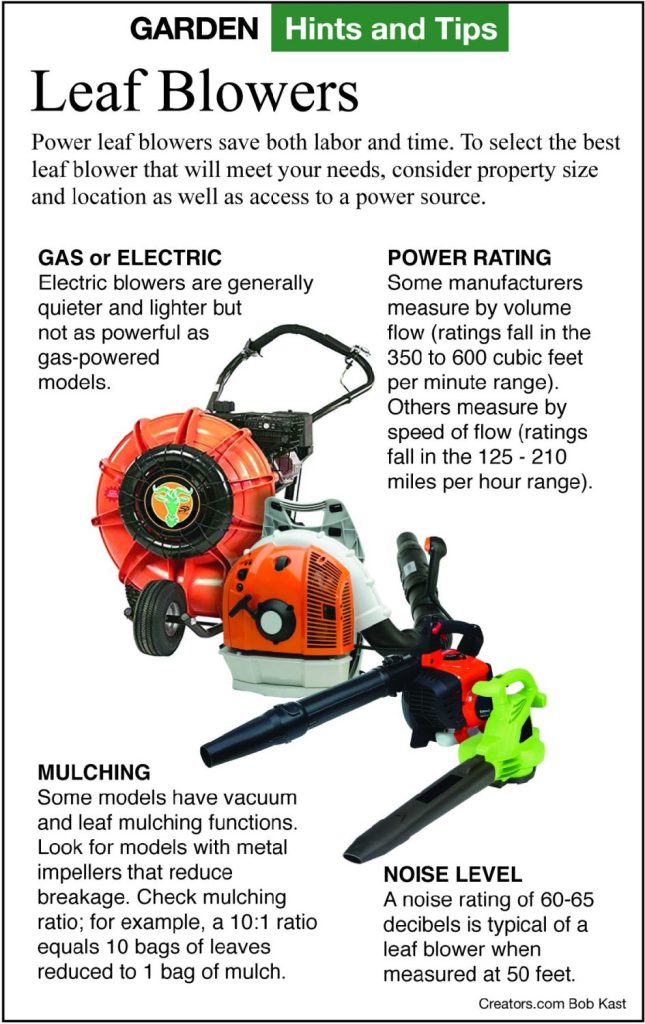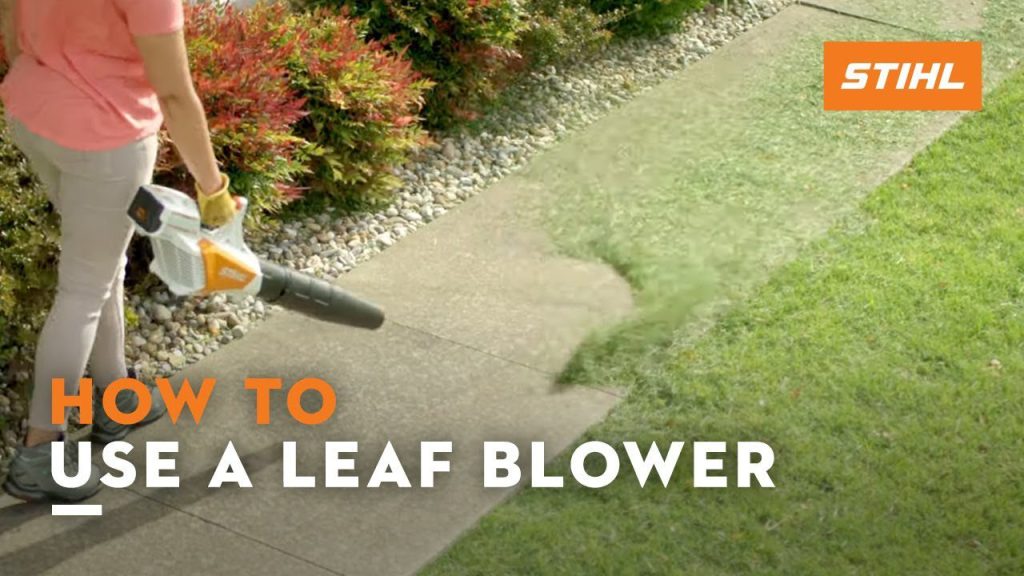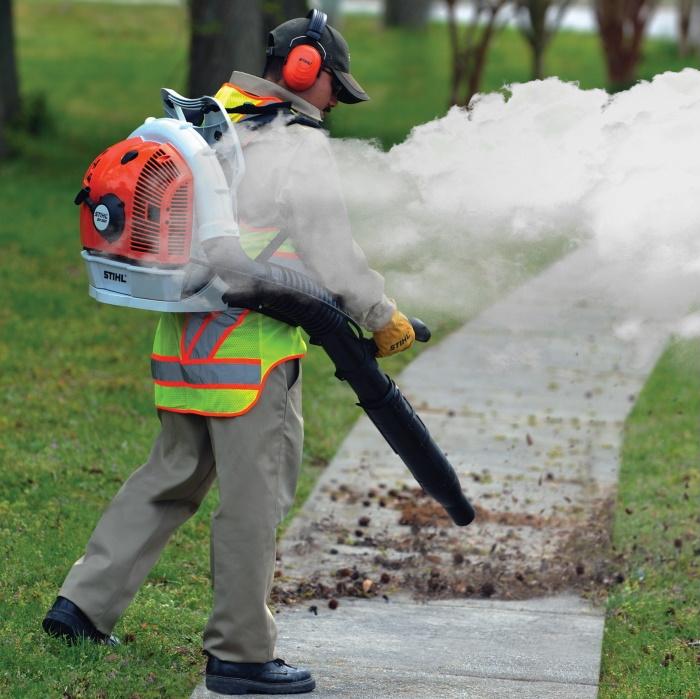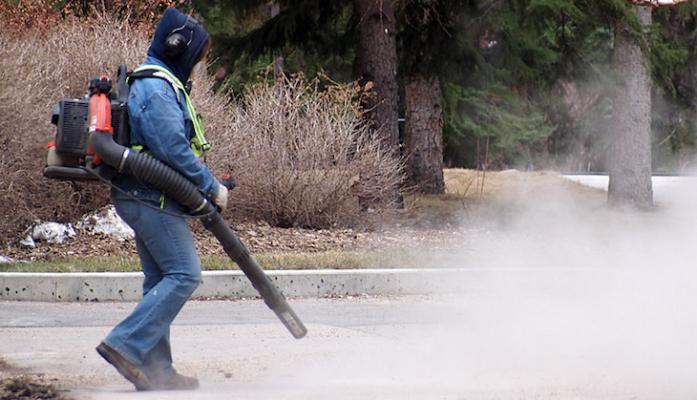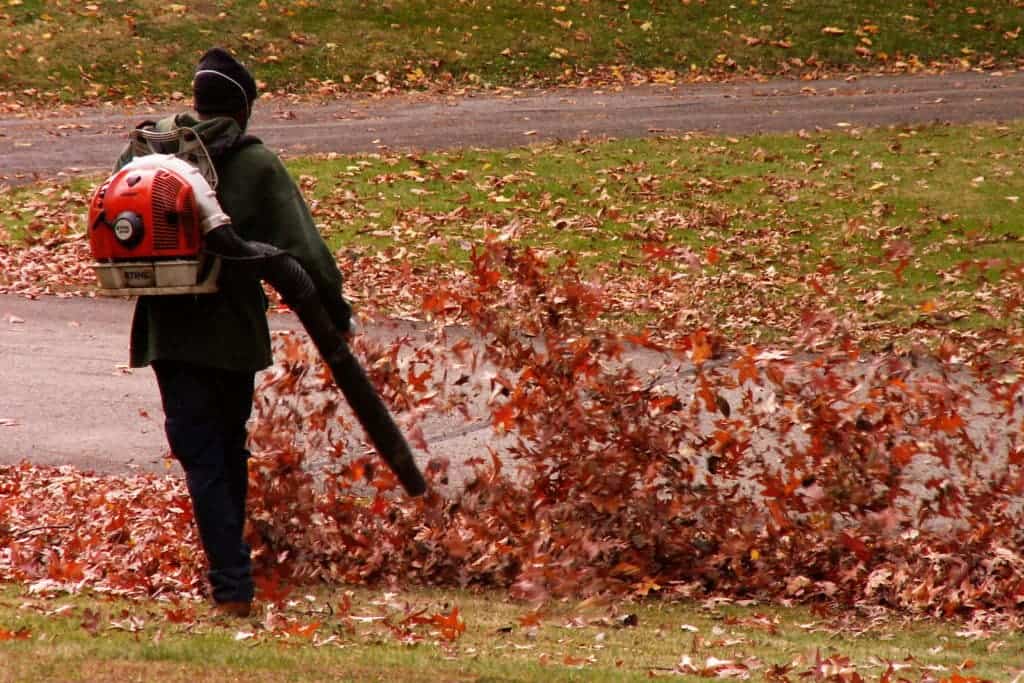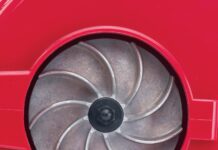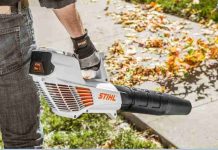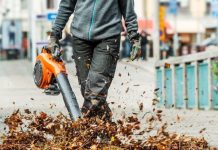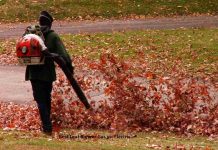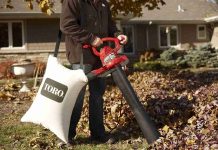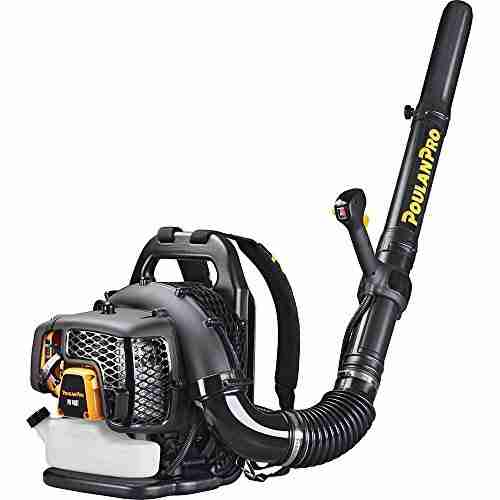This article will explore the dos and don’ts of using a leaf blower.
Whether you are a seasoned gardener or just starting, knowing the proper techniques to make the most of this handy tool is essential.
From avoiding potential hazards to ensuring the longevity of your equipment, we have compiled a list of things you should avoid doing with a leaf blower.
So, before you set out on your next outdoor cleanup mission, keep reading to find out what you should not do with a leaf blower.
Using a Leaf Blower in the Wrong Conditions
Using Wet or Damp Surfaces
One of the most important things to remember when using a leaf blower is to avoid using it on wet surfaces. While clearing away fallen leaves after a rain shower may be tempting, it’s crucial to wait for the surface to dry completely before operating the blower.
Using a leaf blower on a wet surface decreases its efficiency and creates a safety hazard. Wet surfaces can cause the blower to slip, leading to accidents or injury. Additionally, wet leaves can become heavier, making it harder for the blower to remove them effectively. Always wait for surfaces to dry before using a leaf blower to ensure both safety and efficiency.
Using in Windy Weather
Another mistake to avoid is using a leaf blower in windy weather. Strong gusts of wind can not only make it challenging to control the blower but can also cause debris to fly back towards you, potentially causing harm.
Additionally, the wind can disperse the leaves and debris, making it harder to gather and clear them effectively. Using a leaf blower in calm weather conditions ensures better control and improved efficiency and minimizes the risk of accidents or injury.
Using in Crowded or Busy Areas
Using a leaf blower in crowded or busy areas is not only inconsiderate but can also be dangerous. The powerful airflow generated by the blower can propel debris at high speeds, potentially causing harm to people or pets in the vicinity.
It is crucial to use the leaf blower in areas with sufficient space to avoid unintended consequences. Pay attention to your surroundings and ensure no people or animals are nearby before operating the blower. Remember, using a leaf blower in a manner that respects the safety and comfort of others is essential.
Not Wearing Proper Protection
Not Wearing Eye Protection
Protecting our eyes should be a top priority when using a leaf blower. The powerful airflow generated by the blower can cause dust, dirt, and debris to become airborne, posing a risk of eye injury. Always wear protective eyewear that provides adequate coverage, such as safety goggles or glasses. These will shield your eyes from flying debris and help prevent any potential eye damage. Don’t underestimate the importance of eye protection; it can make a significant difference in preventing accidents and protecting your vision.
Not Wearing Ear Protection
Leaf blowers generate significant noise, which can easily surpass safe listening levels. Prolonged exposure to loud noise can lead to hearing loss or damage. To protect your hearing, always wear ear protection when operating a leaf blower.
Earplugs or earmuffs can help reduce noise and safeguard your ears from potential long-term harm. Remember, our hearing is precious; taking the necessary precautions will ensure its preservation.
Not Wearing Respiratory Protection
Using a leaf blower stirs up dust, pollen, mold spores, and other allergens that can be harmful when breathed in. If you suffer from allergies or respiratory issues, wearing a dust mask or respirator is essential to prevent these particles from entering your lungs.
Even if you don’t have any known respiratory conditions, wearing respiratory protection is a wise precaution to minimize the risk of inhaling potentially harmful substances. Ensure that the mask or respirator fits snugly and is suitable for filtering small particles to provide maximum protection.
Using the Leaf Blower Improperly
Pointing the Blower at People or Animals
It may seem obvious, but it’s essential to highlight that pointing a leaf blower at people or animals is highly unsafe and inconsiderate. The forceful airflow generated by the blower can cause injury, discomfort, or distress.
Always aim the blower away from people, pets, and yourself to prevent accidents or harm. Exercise caution and be mindful of your surroundings to ensure the safety and well-being of all individuals nearby.
Using a Maximum Power for Long Periods
While leaf blowers can be powerful tools, they must not overuse their maximum power setting for prolonged periods. Continuous operation at the highest power level can cause the blower’s motor to overheat and decrease lifespan.
Instead, use the blower at the appropriate power level for the task. Most blowers have different speed settings, allowing you to adjust the power according to the intensity of the debris. This helps prolong the blower’s life, reduces unnecessary noise, and conserves energy.
Blowing Debris onto Streets or Neighbors’ Properties
When using a leaf blower, we must ensure that we are considerate of our neighbors and the surrounding environment. Avoid blowing debris onto the streets, sidewalks, or neighboring properties—especially if it doesn’t belong to you.
Blowing leaves, dirt, or grass clippings onto roadways can create hazards for motorists and pedestrians while blowing onto neighbors’ properties can create unnecessary mess and tension. Always direct the debris towards your property or gather it in designated areas for proper disposal.
Not Taking Care of the Leaf Blower
Not Cleaning or Maintaining the Blower
Proper maintenance and regular cleaning are crucial to keep your leaf blower running smoothly and efficiently. Neglecting to clean the blower after each use can lead to clogged air filters, decreased performance, and even engine damage.
Take the time to remove debris from the air intake vents, inspect and clean the spark plug, and ensure the engine is free from dirt or residue. Additionally, follow the manufacturer’s guidelines for lubricating moving parts and replacing worn-out components. Regular maintenance will prolong the blower’s lifespan and ensure optimal performance when needed.
Not Storing the Blower Properly
How you store your leaf blower directly impacts its longevity and reliability. Leaving the blower exposed to the elements or storing it haphazardly can lead to damage or corrosion. Always store the blower in a dry, secure location that protects it from moisture, extreme temperatures, and potential physical damage. It is also essential to store the blower in a place inaccessible to children or unauthorized individuals to prevent accidents or misuse.
Not Checking for Damaged Parts
Before each use, take a few moments to inspect the blower for any visible damage or worn-out parts. Pay attention to the condition of the air vents, the nozzle, the power cord (if applicable), and any other components that may be susceptible to wear and tear.
If you notice any cracks, loose parts, or signs of malfunction, refrain from using the blower until the issue has been addressed. Continuing to use a damaged leaf blower not only compromises its performance but can also pose safety risks. Regularly checking for damaged parts ensures your blower remains in good working condition.
Using the Wrong Fuel or Oil
Using the Wrong Type of Fuel
Using the incorrect type of fuel can cause severe damage to the leaf blower’s engine. Always consult the owner’s manual to determine the correct type of fuel required for your specific blower. Two fuel types are typically recommended: gasoline for gas-powered blowers and an appropriate battery or electricity source for electric blowers. Using a fuel type not recommended by the manufacturer can lead to poor performance, engine failure, or even safety hazards. Take the time to familiarize yourself with the fuel requirements and ensure you use the appropriate fuel every time.
Using the Wrong Oil-to-Gas Ratio
For gas-powered leaf blowers that require a mix of oil and gasoline, it is vital to maintain the correct oil-to-gas ratio. Using the wrong ratio can result in insufficient lubrication or excessive smoke and emissions. Refer to the owner’s manual to determine the recommended ratio and measure it accurately when mixing the oil and gasoline. Using a measuring container designed for this purpose can help you consistently achieve the correct ratio. By adhering to the recommended oil-to-gas ratio, you can optimize the blower’s performance and prevent potential engine damage.
Not Checking Fuel or Oil Levels
Before each use, it is essential to check your leaf blower’s fuel and oil levels. Operating the blower with insufficient fuel or oil can lead to engine damage, reduced performance, or even complete breakdown. Continuously monitor the fuel and oil indicators and refill them as necessary. Regularly monitoring the levels ensures that the blower is always ready for use and prevents any unexpected interruptions when you need it most.
Ignoring Local Regulations and Guidelines
Using a Leaf Blower at Restricted Times
Many localities have specific regulations regarding using leaf blowers, especially in residential areas. It is essential to familiarize yourself with these rules to avoid violations or fines.
To minimize noise disturbances, pay attention to restricted usage times, which may prohibit leaf blower operation during early mornings or late evenings. Respect the guidelines and be considerate of your neighbors’ peace. By adhering to local regulations, you contribute to a harmonious community environment.
Exceeding Permissible Noise Levels
Leaf blowers can be pretty noisy, and exceeding the permissible noise levels can cause inconvenience, disturb wildlife, and harm hearing. Be aware of the maximum noise levels allowed in your area, and choose a leaf blower that complies with those regulations.
Some blowers come with noise-reducing features, such as insulated housing or adjustable speed settings, which can help minimize noise pollution. Using the blower at lower power settings or noise-dampening attachments can also help reduce noise levels. It is our responsibility to operate leaf blowers responsibly and ensure that we do not disrupt the tranquility of our surroundings.
Not Following Local Waste Disposal Rules
Proper waste disposal is an essential aspect of using a leaf blower responsibly. Be sure to adhere to local waste disposal rules when collecting and disposing of the debris cleared by the blower.
Some areas have specific rules regarding yard waste, such as requiring it to be bagged or composted. Others may provide designated areas for disposal. It is essential to familiarize yourself with these regulations to ensure that you are disposing of the debris in an environmentally friendly way and compliant with local guidelines.
Using a Leaf Blower on Delicate Surfaces
Using Delicate Plants or Flowers
Using a leaf blower around delicate plants or flowers can cause irreparable damage. The forceful airflow and debris being blown away can bruise, break, or uproot fragile plants. Exercise caution and avoid using the blower near delicate vegetation. If you need to clear leaves or debris near delicate plants, use a rake or broom instead. This way, you can maintain the beauty of your garden or landscape without risking harm to your plants or flowers.
Using Sensitive Outdoor Furniture
Some outdoor furniture, particularly items made of lightweight materials, can be easily damaged by the powerful airflow of a leaf blower.
When clearing leaves from your patio or outdoor seating area, be mindful of the furniture and avoid pointing the blower directly at it. The force of the air can cause chairs, tables, or cushions to shift or blow away, possibly leading to damage or injury. Clear the area around the furniture manually with a broom or use a lower power setting on the blower to minimize potential risks.
Using Fragile Decorations
If you have delicate outdoor decorations, such as ceramic ornaments or glass figurines, it is essential to exercise caution when using a leaf blower around them.
The strong airflow of the blower can easily knock over or damage fragile decorations. Take the time to manually clear the area around the decorations or use a lower power setting on the blower to minimize risks. Being careful and considerate can prevent unnecessary damage to your cherished outdoor decorations.
Blowing Debris into Water Sources
Blowing Leaves or Debris into Ponds or Lakes
When using a leaf blower near water sources such as ponds or lakes, it is crucial to avoid blowing leaves or debris directly into the water. Leaves and debris can contribute to organic matter accumulation, negatively impacting water quality and the overall ecosystem.
Instead, direct the airflow away from the water sources or use a rake and collect the debris manually. Doing so, you help maintain the cleanliness and health of the water, preserving the natural beauty and balance of the aquatic environment.
Blowing into Storm Drains or Gutters
When clearing leaves and debris from your property, knowing where the airflow is directed is essential. Blowing leaves into storm drains or gutters can lead to clogging, potentially causing localized flooding during heavy rains.
Clogged drains can also impair the drainage system, creating additional problems for your neighborhood. Always blow leaves away from storm drains and gutters to allow proper water flow and prevent unnecessary water-related issues.
Blowing near Fish Tanks or Fountain Pools
If you have outdoor fish tanks or fountain pools, avoid using a leaf blower near them. The forceful airflow from the blower can disturb the water, potentially stressing fish or causing water to overflow from the pool.
To avoid disruption or damage, turn off the blower and manually clear the area around the fish tank or fountain pool. This ensures the safety and well-being of your aquatic pets and maintains the aesthetic appeal of your outdoor water features.
Using an Electric Leaf Blower Near the Water
Operating the Blower in Rain or Wet Conditions
When using an electric leaf blower, it is crucial to prioritize safety, especially when moisture is involved. Never operate an electric leaf blower in rainy or wet conditions. Water and electricity do not mix, and using the blower in such conditions can pose a significant electrical shock risk.
Additionally, wet conditions can also damage the blower itself. Wait for the weather to clear and the surfaces to dry before using an electric leaf blower to ensure your safety and preserve the blower’s longevity.
Using Near Water Sources without Proper Precautions
Even if it’s not raining, it is essential to take precautions when using an electric leaf blower near water sources. Avoid using the blower while standing in wet areas or on damp surfaces.
Wetness can increase the risk of electrical shock, potentially leading to serious injury. Whenever possible, avoid operating an electric leaf blower near water altogether. If using it near a water source is unavoidable, exercise extreme caution, ensure the blower is dry, and wear appropriate protective gear to minimize potential hazards.
Not Ensuring Electrical Safety
When using an electric leaf blower, it is essential to prioritize electrical safety to prevent accidents or damage. Always double-check the electrical cords for any signs of wear or damage before using the blower.
Using a damaged cord can present a severe electrical shock hazard. Keep the cord away from sharp objects or areas where it may accidentally be cut or frayed. It is also essential to ensure the blower is appropriately grounded by plugging it into a grounded outlet. Prioritizing electrical safety not only protects you but also prolongs the life of your electric leaf blower.
Neglecting Surrounding People and Property
Not Communicating with Others Nearby
When operating a leaf blower, it is essential to communicate with others nearby to ensure their safety and minimize disruptions. If there are other people or pets in the area, inform them that you’ll be using the blower.
This allows them to move to a safe distance and avoid any potential accidents or injuries. Additionally, if you work near your neighbors’ properties, consider informing them beforehand to avoid any inconvenience or disturbances. Open communication fosters understanding and helps create a harmonious environment for all.
Not Clearing the Area of Obstacles or Trip Hazards
Before using a leaf blower, take the time to clear the area of any obstacles or potential trip hazards. Objects such as rocks, branches, or garden tools can become projectiles if caught in the blower’s airflow, posing a danger to yourself or others.
Clearing the area prevents accidents and ensures that the blower can function optimally without obstruction. Maintaining a clean and obstacle-free environment allows you to operate the leaf blower more efficiently and minimize any risks associated with flying debris.
Blowing Debris onto Cars or Windows
One of the most common complaints about leaf blowers is debris being blown onto cars or windows. To avoid causing damage or frustration to yourself or others, pay attention to the direction you are blowing the debris.
Always ensure the airflow is directed away from cars, windows, and other fragile surfaces. Place a protective sheet or tarp over any surfaces that may be susceptible to debris before beginning the blowing process. By taking these precautions, you can prevent unintentional damage and maintain a positive relationship with your neighbors.
In conclusion, using a leaf blower effectively and responsibly requires following fundamental guidelines. Avoid using the blower in the wrong conditions, such as on wet surfaces, during windy weather, or crowded areas. Always prioritize wearing proper protection, including eye protection, ear protection, and respiratory protection, to prevent injuries and minimize health risks.
Proper leaf blower usage is essential, such as avoiding pointing it at people or animals, using the correct power settings, and being considerate of others and the environment. Taking care of the leaf blower through regular cleaning, proper storage, and checking for damaged parts ensures its longevity and performance. Using the correct fuel and oil, adhering to local regulations and guidelines, and being cautious when using a leaf blower on delicate surfaces are all crucial factors to consider.
Lastly, prioritizing safety around water sources, ensuring electrical safety when using an electric leaf blower, and being mindful of surrounding people and property help prevent accidents and maintain a harmonious environment. By following these guidelines, you can make the most of your leaf blower while ensuring safety, efficiency, and consideration for others.

